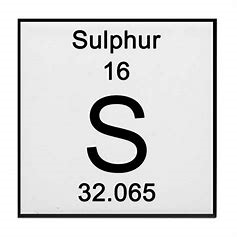How are elements represented symbolically?
2 Answers
The number of neutrons in an atom is simply the elements Relative atomic mass minus the elements atomic number.
The number of electrons is equal (in a non ionic form) to the elements atomic number.
Explanation:
An atoms relative atomic mass is the total number of protons and neutrons within the atom. (Each have a relative atomic mass of 1 - this is not strictly true, but is close enough for most educational purposes).
If you know the elements atomic number (look up in a periodic table) - this is the number of protons within the atom. Therefore calculating the number of neutrons present is just a case of subtracting the elements atomic number from the elements relative atomic mass.
In a non-ionic form, atoms have no overall charge and thus the number of protons present must be equal to the number of electrons present. This being due to the fact that protons have a relative charge of +1 and electrons - 1.
Therefore the number of electrons present is simply the same as the number of protons.
Note - this is only true when dealing with elemental forms of atoms and non-ions.
For example;
Carbon is described in the periodic table as;
This means it has a relative atomic mass of 12 and an atomic number (remember - number of protons) of 6.
It has 6 protons (atomic number of 6)
It therefore has 6 neutrons (12 subtract 6)
It has 6 electrons (6 protons means 6 electrons if no overall charge)
The elemental symbols on the Periodic Table tells us all these things to a first approximation....
Explanation:
So let us take a typical atom, say sulfur.....

So we are given the elemental symbol for sulfur....and its atomic number
And
Now if there are 16 positive charges, the NEUTRAL element (or atom) MUST contain 16 negative charges, 16 electrons, that are conceived to whizz around the massive nuclear core; the electrons have negligible mass, but interaction between, and exchange of electrons, gives rise to all of chemistry. Typically (but not exclusively), a sulfur atom picks up 2 electrons to give the
The number that appears DIRECTLY beneath elemental sulfur is the mass number. Now there are 16 protons in the sulfur nucleus, there are MOSTLY 16 neutrons in each sulfur nucleus. At impossibly short nuclear ranges, protons and neutrons engage in the strong nuclear force, the which at these ranges is stronger than the electrostatic force of repulsion between like electrical charges.
The mass number is the weighted average of the isotopic masses...mostly we have
So, using the Periodic Table, can you tell us the number of protons, neutrons, and electrons in


